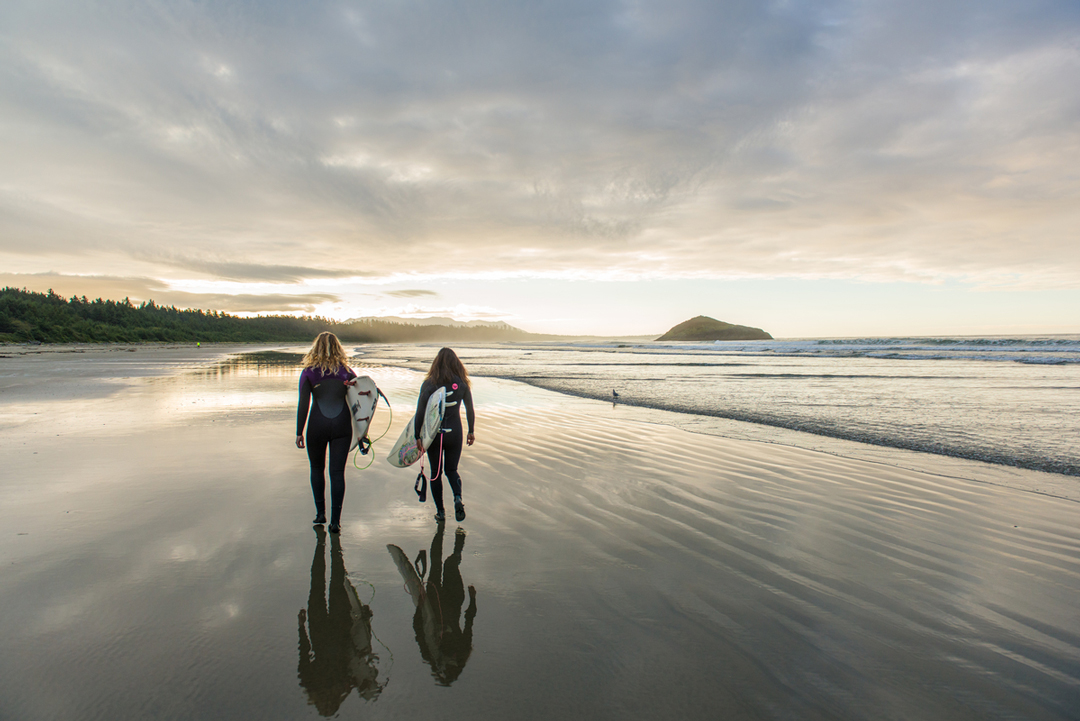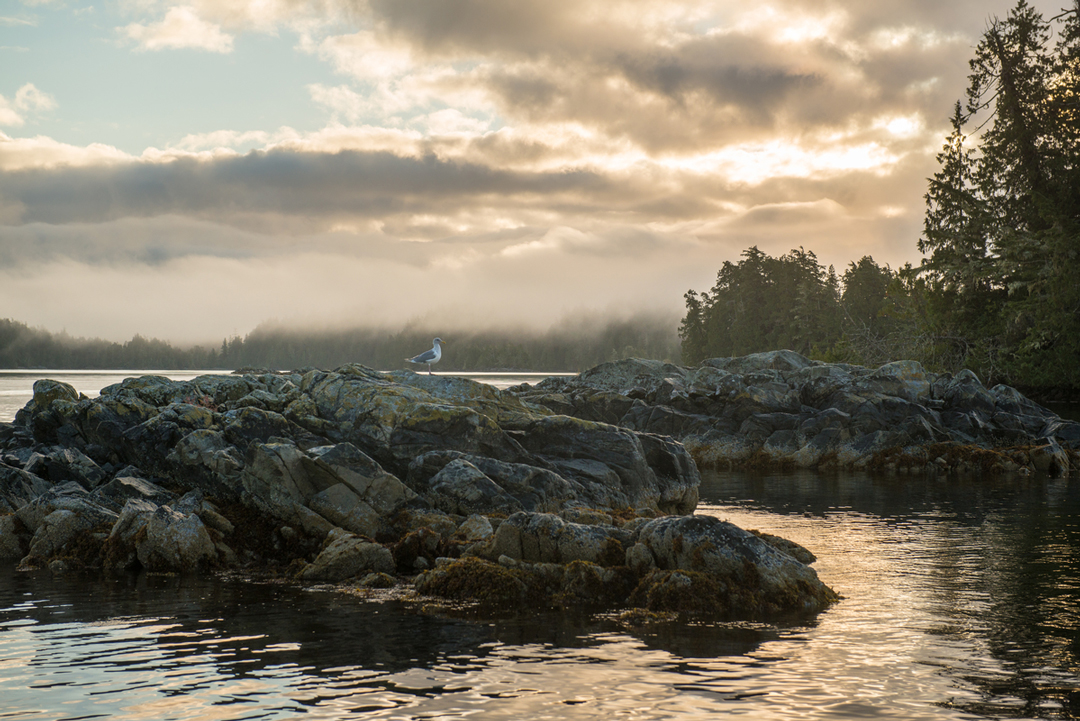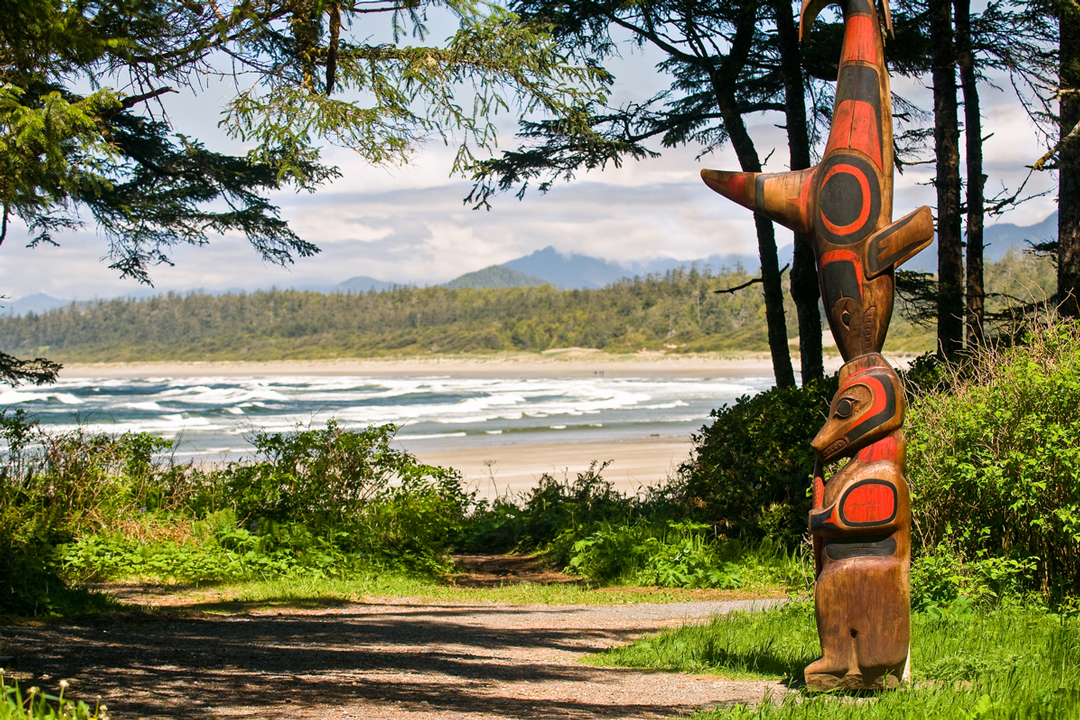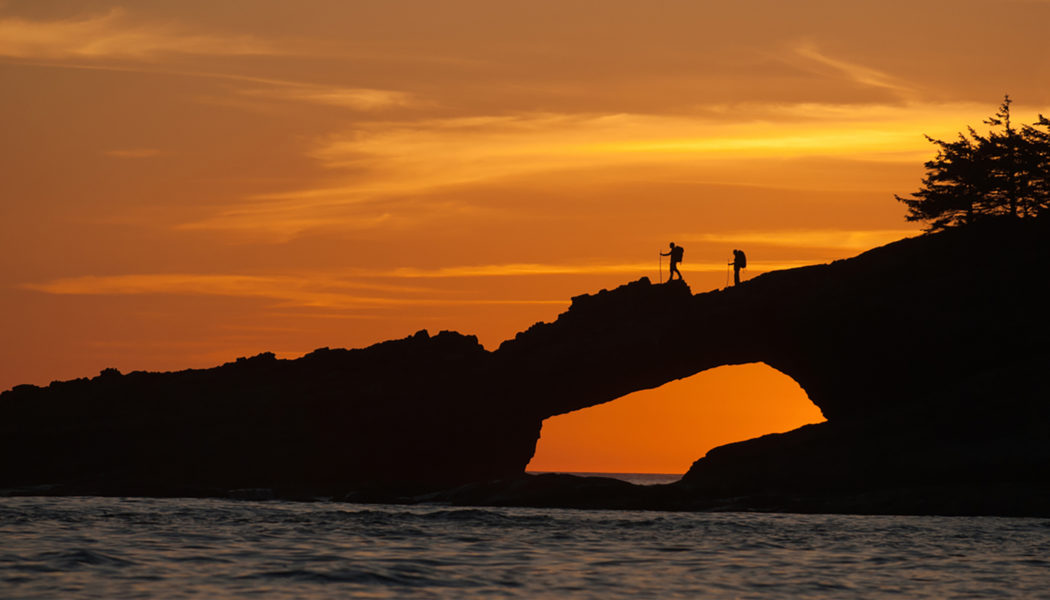Surf breaks, fossils, migrating seabirds, wolves and bears and cougars, oh my! Purple starfish, lush green rainforest…this is the coastal forest and ocean waters of the Pacific Rim National Park Reserve. Situated at the end of a long, winding road and with roughly just 2500 permanent residents, Tofino may be small but it’s a vibrant Canadian surf town that packs a punch when it comes to the protection of its wild spaces. But this wasn’t always the case—the ecosystem, animals, and cultural practices of this region have been at risk numerous times since colonialism, industry, tourism, and development first arrived.

A National Park is Born
Hippies, nudists, bush plane fly-ins, vehicles donutting in the sand … they all descended on Tofino’s Long Beach in the ‘60s as word spread on this once isolated area after it became accessible by road. In summer, a population of roughly just 63 rocketed to 1000s of visitors so out of control that locals looked to the government for a national park just to “protect the beach from…hoodlums and rough people and racing on the beach” as documented in Adrienne Mason’s Long Beach Wild.
This wasn’t the first time the area has been considered for a park. As early as 1929 surveyors had been called in, but they initially missed the charm of Tofino’s cold water, misty mornings and storm season. The National Park Reserve finally came to fruition in May 1971—Canada’s first to include a marine ecosystem. Alongside the original Long Beach Unit between Tofino and Uclulet, the Park today now includes two others: the West Coast Trail and the Broken Islands Group near Bamfield. The Long Beach Unit is located on the traditional territories of both the Tla-o-qui-aht and the Yuułuʔiłʔatḥ First Nations, and plays host to the Kwisitis Interpretive Centre alongside abundant nature experiences.

War in the Woods
Tofino’s unique ecosystem and old-growth forest brought an industry-environmentalist stand-off to a head in 1993. Until the 2021 Fairy Creek blockades, Tofino had been the location of Canada’s largest act of civil disobedience: The War in the Woods. Over 12,000 people came from around the world to protest against clear-cut logging in Clayoquot Sound; colorful characters and a monumental turn of events that are expertly animated in Andrew Struthers’ darkly comedic illustrated book The Green Shadow. Eventually, the landmark activism, media coverage and petitioning in the years that followed resulted in the area becoming a UNESCO Biosphere Reserve in 2000.

Tla-o-qui-aht Tribal Parks
But adamant stewardship of the region began long before 1993. Ahead of the UN deeming the region important enough to protect, Tla-o-qui-aht chief councilor Moses Martin led the way: declaring Meares Island (just across from Tofino’s center) to be a Tla-o-qui-aht Tribal Park in 1984, protecting part of the territory against proposed clear-cutting.
This initiative grew into four Tribal Parks that exist in the region today: Wah-nuh-jus – Hilth-hoo-is (Meares Island), Ha`uukmin (Kennedy Lake Watershed), Tranquil Tribal Park and Esowista Tribal Park, resulting in the largest intact ancient rainforest on Vancouver Island today. The Tribal Parks offer an alternative model to that of the National Parks. Led by the original caretakers of this region, rather than being considered a management tool they seek to ensure people experience these places in accordance with “Natural Law” – a process of observation, appreciation and respectful interaction.
Atop the designation of these areas, the Tribal Parks have two programs: the Ally Program and the Guardians Program. Guardians work on a vast array of restoration, clean-up, environmental monitoring and patrol projects across wild salmon habitats, sensitive ecosystems, backroads and trails.
“Natural Law” – a process of observation, appreciation and respectful interaction.
The Ally Program is a formal certification that seeks to facilitate contributions to these initiatives—including the collection of a 1% ecosystem service fee – and the sharing of Tla-o-qui-aht stories by local businesses and organizations. For funky Hotel Zed (the first hotel that joined the program) park of their involvement looks like the printed storybook ʔiisaak in the Garden (Respect in the Garden) in every hotel room; a project they commissioned with three local writers. To date, there are 75 Tribal Park Ally members across hotels, tour, surf and yoga companies, eateries, stores, and nonprofits—setting a precedent for how businesses and organizations in popular tourist towns, and elsewhere, can collaborate with First Nations in support of both cultural and ecological restoration.
The perception of Tofino as a seemingly pristine wilderness can be misleading. There are still plenty of issues to navigate, particularly around water supply, sewage, and wild salmon. But between the density of nonprofits—such as Surfrider Pacific Rim (who led the way to Tofino becoming the first municipality in BC to ban single-use plastics), Reddfish Restoration, Friends of Clayoquot, Raincoast Education Society and others—and the Tribal Parks offering alternative pathways of regeneration for both the ecosystem and traditional culture, hope is on the horizon. And judging by the region’s history, it’s unlikely its impassioned locals will back down.
For more information visit the Pacific Rim National Park Reserve website.

